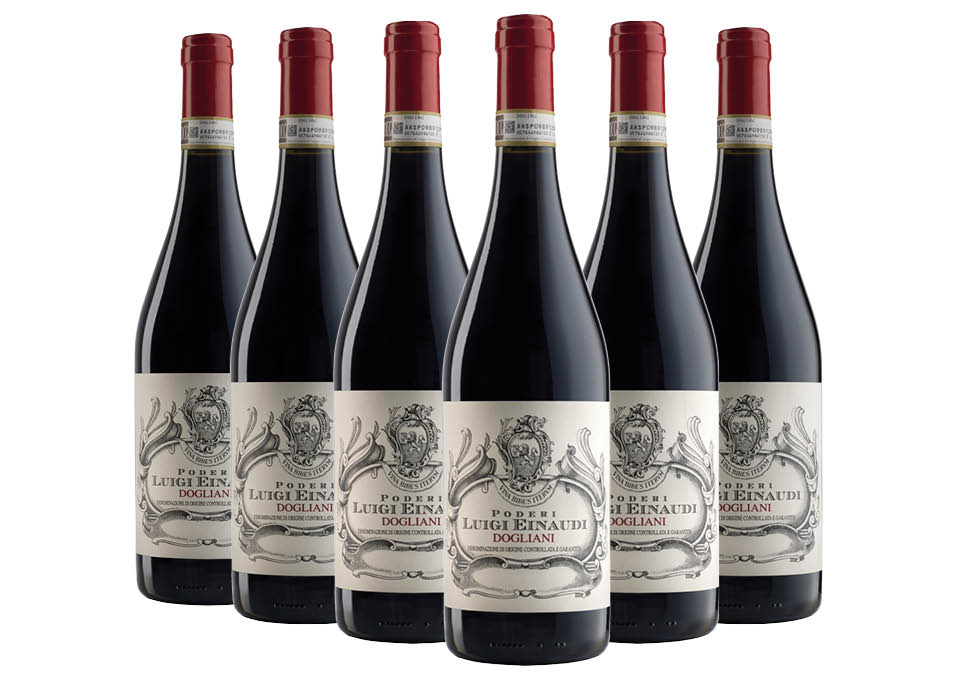Dolcetto
Dolcetto is a widespread grape variety in Piedmont especially in the areas between Asti and Cuneo. On the origin of the name there are some hypotheses concerning the development of the vine, that is the sugar level reached thanks to an early ripening or to the gentle hills that have always hosted it. With respect to its origin, Dolcetto is recognized as an indigenous Piedmontese wine also thanks to a document dated 1593 and kept in the Municipality of Dogliani. With a diffusion in the Piedmont area that goes back to the late medieval era and establishes a possible origin from the Ligurian areas, today Dolcetto fully represents Piedmont: for this reason, in addition to being produced as a base wine by many wineries, there are crops dedicated to Dolcetto which claim to restore full territorial identity to the vine in consideration of the great differences between soils and climatic conditions. In the case of Dolcetto Dogliani we refer to the Province of Cuneo or to Diano d'Alba, a municipality located south of Alba and made known by the so-called sorì, the hillsides with very favorable exposure and able to guarantee wines of the highest quality. In the case of Dolcetto di Ovada the province of reference is that of Alessandria which expresses more structured wines made with aging in wood. In spite of the name, Dolcetto is a wine rich in tannins but poor in acidity that usually gives wines to be drunk at a young age. With a low alcohol content, it has mainly floral and fruity aromas ranging from strawberry to raspberry, from cyclamen to violet. Dense in the body, it can be drunk without difficulty and often grants all the composure of red fruits with a great contribution on the level of the body and softness.
Dolcetto d'Alba
Dolcetto d'Alba is produced in the Langhe in the areas adjacent to the Municipality of Alba and is present in the normal or 'Superior' version. Dolcetto d'Alba wine must be made only with grapes from the vineyard of the same name and respecting a yield of 70% with a maximum of 6300 liters produced per hectare. For the Dolcetto d'Alba Superiore, 12 months of minimum aging are also foreseen. Ruby red in color with some purplish reflections, it is an immediate wine on the nose and capable of re-proposing fragrances of red fruits such as strawberry, raspberry and plum, interspersed with floral notes of rose and cyclamen. On the palate it is warm, harmonious and enveloping, with moderate but noticeable tannins, low acidity, low alcohol content and consistency in the body.
What are the best combinations for Dolcetto wine?
Dolcetto exalts the platters of cold cuts and young cheeses to the maximum but defends a recognizable taste very well when accompanied by first courses such as lasagna, macaroni with meat sauce and soups. Also ideal with not too fatty grilled meats and boiled meats.
What are the characteristics of Dolcetto wine?
Certainly among the characteristics of Dolcetto wine stand out a low acidity and a remarkable consistency on the palate in terms of body. The pulp of red fruits is preponderant and accompanies a low alcohol content.
What is the best Dolcetto d'Alba?
It is difficult to establish which is the best Dolcetto d'Alba but you can certainly get to know this grape without difficulty by exploring the most important appellations such as Alba DOC and Dogliani DOCG and looking for recognizable territorial characteristics through careful tasting.


















